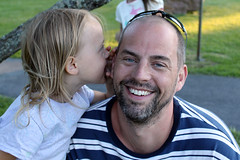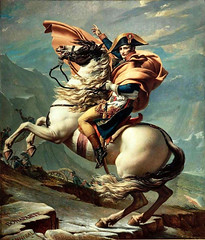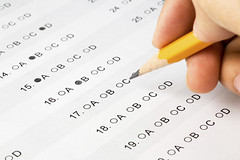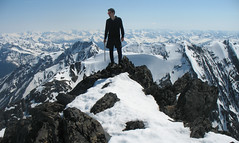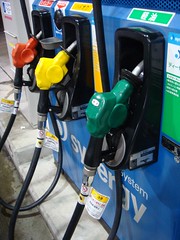| 5279412478 | environment | the sum of all the conditions surrounding us that influence life |  | 0 |
| 5279412479 | environmental science | the field that looks at interactions among human systems and those found in nature |  | 1 |
| 5279412480 | system | any set of interacting components that influence one another by exchanging energy or materials |  | 2 |
| 5279412481 | ecosystem | a particular location on Earth whose interacting components include living or nonliving components |  | 3 |
| 5279412482 | biotic | living |  | 4 |
| 5279412483 | abiotic | nonliving |  | 5 |
| 5279412484 | environmentalist | a person who participates in environmentalism |  | 6 |
| 5279412485 | environmentalism | a social movement that seeks to protect the environment through lobbying, activism, and education |  | 7 |
| 5279412486 | environmental studies | a broader field that environmental science is a subset of which it also includes, environmental policy, economics, literature, and ethics |  | 8 |
| 5279412487 | ecosystem services | the processes by which life-supporting resources such as clean water, timber, fisheries, and agricultural crops are produced |  | 9 |
| 5279412488 | environmental indicators | describe the current state of an environmental system |  | 10 |
| 5279412489 | sustainability | living on Earth in a way that allows us to use its resources without depriving future generations of those resources |  | 11 |
| 5279412490 | biodiversity | the diversity of life forms in an environment |  | 12 |
| 5279412491 | speciation | the evolution of new species |  | 13 |
| 5279412492 | background extinction rate | the average rate at which species go extinct over the long term |  | 14 |
| 5279412493 | greenhouse gases | heat-trapping gases in the atmosphere |  | 15 |
| 5279412494 | anthropogenic | effects derived from human activities |  | 16 |
| 5279412495 | development | improvement in human well-being through economic advancement | | 17 |
| 5279412496 | sustainable development | development that balances current human well-being and economic advancement with resource management for the benefit of future generations |  | 18 |
| 5279412497 | ecological footprint | a measure of how much that person consumes, expressed in area of land |  | 19 |
| 5279412498 | scientific method | an objective way to explore the natural world, draw inferences from it, and predict the outcome of certain events, processes, or changes |  | 20 |
| 5279412499 | hypothesis | a testable conjecture about how something works |  | 21 |
| 5279412500 | null hypothesis | a statement or idea that can falsified, or proved wrong |  | 22 |
| 5279412501 | replication | the process of taking several sets of measurements | | 23 |
| 5279412502 | sample size | number of times a measurement is replicated or the number of sets of measurements |  | 24 |
| 5279412503 | uncertainty | an estimate of how much a measured or calculated value differs from a true value | | 25 |
| 5279412504 | inductive reasoning | the process of making general statements from specific facts or examples |  | 26 |
| 5279412505 | deductive reasoning | the process of applying a general statement to specific facts or situations |  | 27 |
| 5279412506 | critical thinking | the process of reading findings with a critical eye; questioning the source of the information, considering the methods of processes that were used to obtain the information, and drawing your own conclusions |  | 28 |
| 5279412507 | theory | a hypothesis that has been repeatedly tested and confirmed by multiple groups of researchers and has reached wide acceptance | | 29 |
| 5279412508 | natural law | a theory to which there are no known exceptions and which has withstood rigorous testing |  | 30 |
| 5279412509 | control group | a group that experiences exactly the same conditions as the experimental group, except for the single variable under study |  | 31 |
| 5279412510 | natural experiment | occurs when a natural event acts as an experimental treatment in an ecosystem | | 32 |
| 5279412511 | environmental justice | a social movement and field of study that works toward equal enforcement of environmental laws and the elimination of disparities, whether intended or unintended, in how pollutants and other environmental harms are distributed among the various ethnic and socioeconomic groups within a society |  | 33 |
| 5279412512 | Matter | has mass and takes up space | | 34 |
| 5279412513 | Mass | measurement of matter (kg) | | 35 |
| 5279412514 | Weight | how mas is effected by gravity | | 36 |
| 5279412515 | Atom | smallest particle that can be an element | | 37 |
| 5279412516 | Molecule | multiple atoms | | 38 |
| 5279412517 | Element | multiple molecules; 94 naturally occuring, 24 man made | | 39 |
| 5279412518 | Compound | molecules containing more than one element | | 40 |
| 5279412519 | Nucleus | core containing protons and neutrons | | 41 |
| 5279412520 | Protons | postive charge, defines atomic number | | 42 |
| 5279412521 | Neutrons | neutral charge, more or less create isotopes | | 43 |
| 5279412522 | atomic number | number of protons | | 44 |
| 5279412523 | isotopes | elements with more or less than usual neutrons | | 45 |
| 5279412524 | Radioactive Decay | Radioactive (unstable) isotopes spontaneously release material from the nucleus | | 46 |
| 5279412525 | Half-Life | amount of time it takes for half of the material in an element to decay
y=x(.5)^z
when y=current amount of material, x=starting amount of material, and z=the number of half-lives passed in a given amount of time | | 47 |
| 5279412526 | Carbon Dating | Calculates the proportion of carbon-14 in dead biological material to see how long it has been dead | | 48 |
| 5279412527 | Oribitals | Electron clouds | | 49 |
| 5279412528 | Covalent Bonds | Shared electrons
ex) Methane | | 50 |
| 5279412529 | Ionic Bonds | Transferring electrions so that one becomes positively charged and the other negatively charged; not as strong as covalent
ex) Sodium Chloride | | 51 |
| 5279412530 | Hydrogen Bonds | weak, covalent bonds including hydrogen | | 52 |
| 5279412531 | organic compounds | carbon-carbon or carbon-hydrogen bonds | | 53 |
| 5279412532 | Lipids | non soluble | | 54 |
| 5279412533 | Nucleic Acids | DNA/RNA | | 55 |
| 5279412534 | Polar Molecule | One side is more positive and the other side is more negative ex) water | | 56 |
| 5279412535 | Surface Tension | Results from cohesion of water molecules at the surface | | 57 |
| 5279412536 | Capillary Action | results when water molecules are more attracted to other molecules than to each other | | 58 |
| 5279412537 | Boiling Point and Freezing Point | 100C/212F=water becomes a gas
0C/32F=water becomes a solid | | 59 |
| 5279412538 | Solvent | Water=Universal Solvent | | 60 |
| 5279412539 | Acid | contributes hydrogen ions to a solution; when dissolved in water it separates into H+ and negatively charged ions | | 61 |
| 5279412540 | Base | contributes hydroxide ions to a solution; when dissolved in water it separates into OH- and positively charged ions | | 62 |
| 5279412541 | pH scale | logarithmic scale, so each # on the scale is a factor of 10
ex) 4 is ten times as acidic as a 5
above 7=Basic
below 7=Acidic
7= Water | | 63 |
| 5279412542 | Chemical Reaction | occurs when atoms separate from molecules they are a part of or recombine with other molecules | | 64 |
| 5279412543 | Law of Conservation of Matter | no matter created or destroyed | | 65 |
| 5279412544 | Inorganic Compounds | either do not contain carbon or contains carbon bound to elements other than hydrogen | | 66 |
| 5279412545 | Organic Compounds | carbon-carbon or carbon-hydrogen bonds are present | | 67 |
| 5279412546 | Carbohydrates | compounds composed of carbon, hydrogen, and oxygen atoms
ex) glucose (simple sugar) | | 68 |
| 5279412547 | Protein | made up of long chains containing nitrogen and organic molecules called amino acids | | 69 |
| 5279412548 | Enzymes | Proteins that control the rate of reactions | | 70 |
| 5279412549 | Cell | consists of four types of macromolecules and other substances surrounded by a membrane | | 71 |
| 5279412550 | Energy | ability to do work/transfer heat | | 72 |
| 5279412551 | Electromagnetic Radiation | a form of energy we percieve as heat
ex) light, ultraviolet, infrared | | 73 |
| 5279412552 | Photons | massless pockets of energy that travel at the speed of light and carry electromagnetic radiation | | 74 |
| 5279412553 | Wavelength | Determines the amount of energy carried in a photon | | 75 |
| 5279412554 | Joule | measure of energy | | 76 |
| 5279412555 | calorie | amount of energy it takes to raise 1 gram of water by 1 degrees C
1 calorie=4.184 J | | 77 |
| 5279412556 | Calorie | Food Calorie
1Calorie=1,000calories (1 Kilocalorie) | | 78 |
| 5279412557 | British Thermal Unit | amount of energy to raise 1 pound of water by 1 degree F
1BTU=1055J | | 79 |
| 5279412558 | Kilowatt-Hour | amount of energy used by running 1 Kilowatt of electricity for 1 hour
1kWh=3.6 Megajoules | | 80 |
| 5279412559 | Power | rate at which work is done
Energy=power*time
Power=Energy/time | | 81 |
| 5279412560 | Kinetic Energy | Energy in motion | | 82 |
| 5279412561 | Potential Energy | Energy stored | | 83 |
| 5279412562 | Chemical Energy | Potential energy stored between chemical bonds | | 84 |
| 5279412563 | Temperature | Kinetic Energy of a substance | | 85 |
| 5279412564 | First Law of Thermodynamics | The principle of conservation of energy. Energy can be transferred and transformed, but it cannot be created or destroyed. | | 86 |
| 5279412565 | Second Law of Thermodynamics | when energy is changed from one form to another, some useful energy is always degraded into lower quality energy (usually heat) | | 87 |
| 5279412566 | Energy Efficiency | ratio of the amount of work to total amount of energy expended | | 88 |
| 5279412567 | Energy Quality | the ease of use of an energy source (convienience, concentration, accessibility) | | 89 |
| 5279412568 | Entropy | a measure of the disorder of a system; increasing unless energy is added to create order | | 90 |
| 5279412569 | Open System | Exchanges in energy or matter occur across system boundaries; most systems are open
(sunlight, birds, water, migration all contribute to an open system) | | 91 |
| 5279412570 | Closed System | Matter and energy exchanged only within the system ex) some caves | | 92 |
| 5279412571 | climate | the average weather that occurs in a given region over a long period - typically several decades | | 93 |
| 5279412572 | troposhpere | the layer of the atmosphere closest to Earth's surface | | 94 |
| 5279412573 | stratosphere | layer of the atmosphere above the troposphere | | 95 |
| 5279412574 | albedo | the percentage of incoming sunlight that is reflected from a surface | | 96 |
| 5279412575 | saturation point | the maximum amount of water vapor that can be in the air at a given temperature | | 97 |
| 5279412576 | adiabatic cooling | the process in which the decrease of atmospheric pressure allows rising air to expand in volume and lower it's temperature | | 98 |
| 5279412577 | adiabatic heating | the process in which the increase of atmospheric pressure allows sinking air to decrease in volume and raise it's temperature | | 99 |
| 5279412578 | Hadley Cell | the convection currents that cycle between the equator and 30 degrees N and S | | 100 |
| 5279412579 | intertropical convergence zone (ITCZ) | where the ascending branches of the two Hadley cells converge | | 101 |
| 5279412580 | polar cells | similar to Hadley cells; circulates beween 60 degrees N and S and the poles | | 102 |
| 5279412581 | Coriolis Effect | the deflection of an objects path due to Earth's rotation | | 103 |
| 5279412582 | gyres | large-scale patterns of water circulation | | 104 |
| 5279412583 | upwelling | upward movement of water toward the surface | | 105 |
| 5279412584 | thermohaline circulation | drives the mixing of surface water and deep water | | 106 |
| 5279412585 | el Nino; ENSO | periodic changes in winds and ocean currents | | 107 |
| 5279412586 | rain shadow | warm, dry air produces arid conditions on the leeward side of a mountain range | | 108 |
| 5279412587 | biomes | terrestrial geographic regions that have a particular combination of average annual temperature and annual precipitation and contain distinctive plant growth forms that are adapted to that climate | | 109 |
| 5279412588 | tundra | a biome that is cold and treeless, with low-growing vegetation | | 110 |
| 5279412589 | permafrost | an impermeable, permanently frozen layer that prevents water from draining and roots from penetrating | | 111 |
| 5279412590 | boreal forest | a biome; are forests made up primarily of coniferous (cone-bearing) evergreen trees that can tolerate cold winters and short growing seasons | | 112 |
| 5279412591 | temperate rainforest | a biome; moderate temperatures and high precipitation typify this biome | | 113 |
| 5279412592 | temp seasonal forest | a biome; are more abundant than temperate rainforests; experience much warmer summers and colder winters than temperate rainforests | | 114 |
| 5279412593 | shrubland; Chaparral | a biome; is characterized by hot, dry summers and mild, rainy winters | | 115 |
| 5279412594 | Temperate Grassland | a biome; has the lowest average annual precipitation of any temperate biome; cold, harsh winters and hot, dry summers characterize this biome | | 116 |
| 5279412595 | Tropical Rainforest | a biome; are warm and wet, with little seasonal temperature variation | | 117 |
| 5279412596 | Tropical Seasonal Forests; Savannahs | a biome; are marked by warm temperatures and distinct wet and dry seasons | | 118 |
| 5279412597 | Subtropical Desets | a biome; also known as hot deserts; hot temperatures, extremely dry conditions, and sparse vegetation prevail | | 119 |
| 5279412598 | Littoral Zone | is the shallow area of soil and water near the shore where algae and emergent plants such as cattails grow | | 120 |
| 5279412599 | Limnetic Zone | open water | | 121 |
| 5279412600 | Phytoplankton | floating algae | | 122 |
| 5279412601 | Profundal Zone | very deep lakes have a region of water below the limnetic zone | | 123 |
| 5279412602 | Benthic Zone | the muddy bottom of a lake or bond beneath the limnetic and profundal zones | | 124 |
| 5279412603 | Freshwater Wetland | a biome; aquatic biomes that are submerged or saturated by water for at least part of each year, but shallow enough to support emergent vegetation throughout | | 125 |
| 5279412604 | Salt Marsh | a biome; found along the coast in temperate climates; one of the most productive biomes in the world | | 126 |
| 5279412605 | Mangrove Swamps | a biome; occur along tropical and subtropical coasts | | 127 |
| 5279412606 | Intertidal Zone | the narrow band of coastline between the levels of high tide and low tide | | 128 |
| 5279412607 | Coral Reefs | a biome; are found in warm, shallow waters beyond the shoreline, represent Earth's most diverse marine biome | | 129 |
| 5279412608 | Coral Bleaching | a phenomenon in which the algae inside the corals die which soon causes the corals to die | | 130 |
| 5279412609 | Photic Zone | the upper layer of water that receives enough sunlight to allow photosynthesis | | 131 |
| 5279412610 | Aphotic Zone | the deeper layer of water that lacks sufficient sunlight for photosynthesis | | 132 |
| 5279412611 | Chemosythesis | process in which bacteria deep in the ocean use the bonds of methane and hydrogen sulfide to generate energy | | 133 |
| 5279412612 | ecosystem diversity | the measure of the variety of ecosystems within a region | | 134 |
| 5279412613 | species diversity | the measure of the variety of species within an ecosystem | | 135 |
| 5279412614 | genetic diversity | the measure of the variety of genes within a species | | 136 |
| 5279412615 | species richness | the number of species in a given area | | 137 |
| 5279412616 | species eveness | tells us whether a particular ecosystem is numerically dominated by one species or whether all of its species have similar abundances | | 138 |
| 5279412617 | phylogenies | the branching patterns of evolutionary relationships | | 139 |
| 5279412618 | evolution | a change in the genetic composition of a population over time | | 140 |
| 5279412619 | microevolution | the evolution below the species level, such as the evolution of different varieties of apples or potatoes | | 141 |
| 5279412620 | macroevolution | the process in which genetic changes give rise to a new species, genera, family, class, or phyla | | 142 |
| 5279412621 | genes | are physical locations on chromosomes within each cell of an organism; determines the range of possible traits that it can pass down to its offspring | | 143 |
| 5279412622 | genotype | the complete set of genes in an individual | | 144 |
| 5279412623 | mutation | an occasional mistake in the copying process of DNA produces a random change in the genetic code | | 145 |
| 5279412624 | recombination | occurs as chromosomes are duplicated during reproductive cell division and a piece of one chromosome breaks off and attaches to another chromosome | | 146 |
| 5279412625 | phenotype | the actual set of traits expressed in that individual | | 147 |
| 5279412626 | artificial selection | when humans determine which individuals breed, typically with a preconceived set of traits in mind | | 148 |
| 5279412627 | natural selection | the environment determines which individuals survive and reproduce | | 149 |
| 5279412628 | fitness | an individual's ability to survive and reproduce | | 150 |
| 5279412629 | adaptations | traits that improve an individual's fitness | | 151 |
| 5279412630 | genetic drift | a change in the genetic composition of a population over time as a result of random mating | | 152 |
| 5279412631 | bottleneck effect | a reduction in the genetic diversity of a population caused by a reduction in its size | | 153 |
| 5279412632 | founder effect | a change in a population descended from a small number of colonizing individuals | | 154 |
| 5279412633 | geographic isolation | when a subset of individuals from a larger population may colonize a new area of habitat that is physically separated from that of the rest of the population | | 155 |
| 5279412634 | reproductive isolation | when the geographically separated population becomes so different that even if the physical barrier were removed, they could no longer interbreed and produce viable offspring | | 156 |
| 5279412635 | allopatric speciation | a process of speciation that requires geographic isolation | | 157 |
| 5279412636 | sympatric speciation | the evolution of one species into two species in the absence of geographic isolation | | 158 |
| 5279412637 | genetic engineering | techniques in which scientists can now copy genes form a species with some desirable trait and insert these genes into other species | | 159 |
| 5279412638 | genetically modified organisms | organisms that have had their genetic makeup modified by genetic engineering | | 160 |
| 5279412639 | range of tolerance | limits to the abiotic conditions they can tolerate | | 161 |
| 5279412640 | fundamental niche | the suite of ideal conditions | | 162 |
| 5279412641 | realized niche | the range of abiotic and biotic conditions under which a species actually lives | | 163 |
| 5279412642 | species distribution | the areas of the world in which the species lives | | 164 |
| 5279412643 | niche generalists | organisms that can live in a variety of habitats or feed on a variety of species | | 165 |
| 5279412644 | niche specialists | organisms that are specialized to lie in a specific habitat of feed on a small group of species | | 166 |
| 5279412645 | fossils | the remains of organisms that have been preserved in rock | | 167 |
| 5279412646 | mass extinction | events in which large number of species when extinct over relatively short periods of time | | 168 |
| 5279412647 | sixth mass extinction | scientists have predicted/identified a new mass extinction is underway and an estimated 2-25 percent of species will go extinct; it is caused by humans | | 169 |
| 5279412648 | ecosystem | A particular location distinguished by its mix of interacting biotic and abiotic features. | | 170 |
| 5279412649 | producers | Organisms that use the sun's energy to produce usable forms of energy. | | 171 |
| 5279412650 | autotrophs | Organisms that use the sun's energy to produce usable forms of energy. | | 172 |
| 5279412651 | photosynthesis | Producers use solar energy to convert CO2 and H20 into C6H12O6, glucose. | | 173 |
| 5279412652 | cellular respiration | Cells convert glucose (C6H12O6) into energy, CO2, and H20. | | 174 |
| 5279412653 | consumers | Incapable of photosynthesis and must obtain energy by consuming other organisms. | | 175 |
| 5279412654 | heterotrophs | Incapable of photosynthesis and must obtain energy by consuming other organisms. | | 176 |
| 5279412655 | primary consumers | Heterotrophs that consume producers. (Plant and algae eating animals) E.g. zebras, tadpoles | | 177 |
| 5279412656 | secondary consumers | Heterotrophs that are carnivores and eat primary consumers. E.g. wolves. | | 178 |
| 5279412657 | tertiary consumers | Carnivores that eat secondary consumers. E.g. bald eagles. | | 179 |
| 5279412658 | trophic levels | Successive levels of organisms consuming one another. | | 180 |
| 5279412659 | food chain | The sequence of consumptions from producers through tertiary consumers. Energy moves from one trophic level to the next. | | 181 |
| 5279412660 | food web | A more complex and accurate representation of the flow of energy in an ecosystem. | | 182 |
| 5279412661 | scavengers | Carnivores that consume dead animals. E.g. vultures. | | 183 |
| 5279412662 | detritivores | Organisms that break down dead tissues and waste products. E.g. dung beetles. | | 184 |
| 5279412663 | decomposers | The fungi and bacteria that complete the breakdown of nutrients and recycle these nutrients back into the ecosystem. | | 185 |
| 5279412664 | gross primary productivity (GPP) | The total amount of solar energy the producers in an ecosystem capture via photosynthesis over a given amount of time. | | 186 |
| 5279412665 | net primary productivity (NPP) | The energy captured minus the energy respired by producers. | | 187 |
| 5279412666 | biomass | The total mass of all the living matter in a specific area. | | 188 |
| 5279412667 | What does the NPP establish? | The rate at which biomass is produced over a given amount of time. | | 189 |
| 5279412668 | standing crop | The amount of biomass present in an ecosystem at a particular time. | | 190 |
| 5279412669 | Difference between productivity and standing crop? | Productivity measures the rate of energy production over time. Standing crop measures the amount of energy at a given time. | | 191 |
| 5279412670 | ecological efficiency | The proportion of consumed energy that can be passed from one trophic level to another. ~10%. | | 192 |
| 5279412671 | trophic pyramid | A representation of the distribution of biomass, numbers, or energy among trophic levels. | | 193 |
| 5279412672 | biosphere | The region of Earth where life resides; the combination of all ecosystems on Earth. | | 194 |
| 5279412673 | Energy... | Flows through the biosphere and cycles within the biosphere. | | 195 |
| 5279412674 | biogeochemical cycles | The movements of matter within and between ecosystems. | | 196 |
| 5279412675 | hydrologic cycle | The movement of water through the biosphere. | | 197 |
| 5279412676 | transpiration | A process in which plants release water from their leaves into the atmosphere. | | 198 |
| 5279412677 | evapotranspiration | The combined amount of evaporation and transpiration; used as a measure of water moving through an ecosystem. | | 199 |
| 5279412678 | runoff | Water that flows over the ground surface rather than soaking into the ground. | | 200 |
| 5279412679 | macronutrients | 6 key elements: nitrogen, phosphorous, potassium, calcium, magnesium, and sulfur. | | 201 |
| 5279412680 | limiting nutrient | A nutrient whose availability constrains the growth of an organism. | | 202 |
| 5279412681 | nitrogen fixation | The process of converting N2 gas directly into ammonia (NH3). Cyanobacteria and legume root-dwelling bacteria. NH3 gets converted into ammonium, NH4+, in the soil. | | 203 |
| 5279412682 | ammonification | Fungal and bacterial decomposers excrete ammonium. | | 204 |
| 5279412683 | leaching | The removal of dissolved materials from soil by water moving downwards through soil. | | 205 |
| 5279412684 | denitrification | A process in which fixed nitrogen compounds are converted back into nitrogen gas and returned to the atmosphere. | | 206 |
| 5279412685 | eutriphication | Process by which lakes become rich in nutrients from the surrounding watershed, thereby resulting in a change in the kinds of organisms in the lake. | | 207 |
| 5279412686 | hypoxic | Low-oxygen conditions; dead zones usually after an algal bloom. | | 208 |
| 5279412687 | phosphorous cycle | The major source of phosphorus on land is the weathering of rocks. | | 209 |
| 5279412688 | disturbance | An event that results in changes in population size or community composition. | | 210 |
| 5279412689 | watershed | All the land in a given landscape that drains into a stream, river, lake, or wetland. | | 211 |
| 5279412690 | resistance | A measure of how much a disturbance can affect the flow of energy and matter. | | 212 |
| 5279412691 | resilience | The rate at which an ecosystem returns to its original state after a disturbance. | | 213 |
| 5279412692 | restoration ecology | The study and implementation of restoring damaged ecosystems. | | 214 |
| 5279412693 | intermediate disturbance hypothesis | States the ecosystems with intermediate levels of disturbance are more diverse than those with high or low disturbance. | | 215 |
| 5279412694 | instrumental value | A species has worth as an instrument or tool. E.g. lumber, pharmaceuticals. | | 216 |
| 5279412695 | intrinsic value | Has worth independent of human benefit. | | 217 |
| 5279412696 | provision | A good than humans can use directly. E.g. lumber, food crops, rubber. | | 218 |
| 5279412697 | assilimation | when the nitrogen from the soil goes into the plants | | 219 |
















